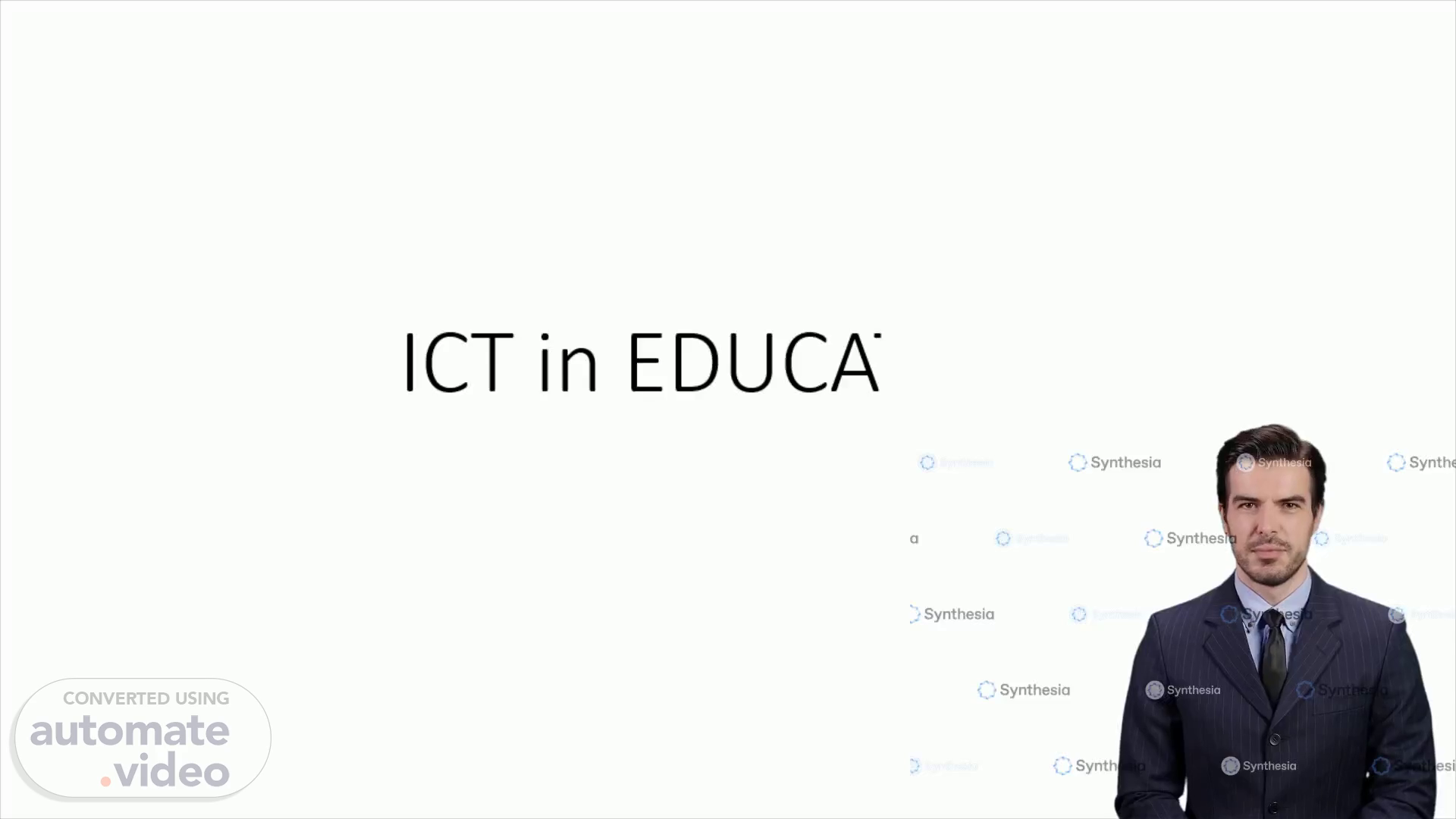Page 1 (0s)
. [Virtual Presenter] Welcome everyone, Today we are here to discuss the potential of Information and Communication Technology (ICT) in Education! How we can use it to improve student learning outcomes and to prepare them for the future? Let's find out..
Page 2 (16s)
. [Virtual Presenter] ICT stands for Information and Communication Technology, and refers to the use of technology to access, process, and share information. It has become an important tool in education for a number of reasons, from access to information and improved communication to increased engagement and motivation. It can also create flexible and adaptable learning for students of different backgrounds, and provide them with the skills they need for the future. Now let's take a look at how ICT is integrated into education..
Page 3 (1m 20s)
[Audio] In today's world, Information and Communication Technology (ICT) plays an increasingly important role in education. There are several ways that ICT can be integrated into the learning environment. For instance, teachers can use educational software, interactive whiteboards, and other technological tools to supplement their instruction. Additionally, online learning is becoming more and more popular, with options ranging from fully online degree programs to supplementary online courses. Furthermore, distance education is now made possible through video conferencing technology, while mobile learning uses mobile devices like tablets and smartphones to access educational resources and engage with learning activities. Game-based learning is another option which uses educational games and simulations to teach concepts. Finally, virtual and augmented reality technology can be used to create immersive learning experiences. Ultimately, the key is to find the right balance between technology and traditional instruction to ensure that the technology is driving learner engagement..
Page 4 (2m 31s)
[Audio] The integration of Information and Communications Technology (ICT) in education offers many unique benefits and advantages. ICT tools such as games, simulations and virtual reality turn learning into an interactive and engaging experience, increasing student motivation and engagement. It also provides students and teachers with access to a wide range of information and educational resources. In addition, ICT tools make it easier for students and teachers to communicate and collaborate with each other. Furthermore, ICT can be used to provide a more personalized learning experience for each student, as well as to allow flexibility in the way educational material is delivered. ICT integration can also be cost-effective and can be used to improve assessment, feedback, and evaluation. Overall, ICT can be used to greatly enhance the learning experience and provide a more comprehensive and effective education for students..
Page 5 (3m 36s)
[Audio] "Integrating ICT in education brings many advantages, but there are also several challenges that need to be addressed including lack of access to technology, teacher training, student well-being, and the digital divide. To ensure that all students are able to benefit from technology-enhanced education it's important to consider these challenges and find ways to overcome them. Coming up next, we will look at how regular physical exercise can improve mental health and wellbeing.".
Page 6 (4m 41s)
[Audio] This is just one example of how technology can be used to improve education. Examples like the One Laptop per Child program, the Khan Academy, MIT OpenCourseWare, Smart Classrooms in Finland, Virtual Classrooms in South Korea, Educelerate, and Duolingo demonstrate how ICT can provide access, engagement, and personalized learning opportunities. Let's take a closer look now at how technology can be used to transform an old and dilapidated house..
Page 7 (5m 47s)
[Audio] Integrating technology into the classroom can be a powerful tool for enhancing student learning, but it can also bring about its own set of challenges. To ensure success, it’s important to provide access to technology, such as computers, tablets, and internet access, and ensure that teachers are equipped with the necessary skills and knowledge to effectively integrate technology into their teaching practice. Additionally, collaboration and communication among teachers, students and parents should be encouraged, and curriculum integration should be considered to ensure that technology is used effectively. It’s also important to set clear guidelines regarding the use of technology, to provide students with a variety of digital resources that align with their learning styles, and to measure the effectiveness of ICT integration. By following these recommendations, educators, administrators and policymakers can help to maximize the benefits of technology for students and teachers..
Page 8 (6m 52s)
[Audio] As we come to the end of our presentation, I want to take a moment to discuss the importance of ICT in Education using WANG framework. According to WANG, there are three fundamental elements that are necessary to support the effective integration of ICT in education: Technical infrastructure, Pedagogical infrastructure and Social infrastructure. Technical infrastructure refers to the hardware, software, and network infrastructure that is necessary to support the use of ICT in education, while pedagogical infrastructure refers to the curriculum, teacher training, and other pedagogical resources that are necessary to support the effective use of ICT in education. Lastly, social infrastructure refers to the policies, procedures, and other social resources that are necessary to support the effective use of ICT in education. These three elements are all intertwined and necessary to support the effective integration of ICT in education. I thank you all for your attention and being here with us today..
